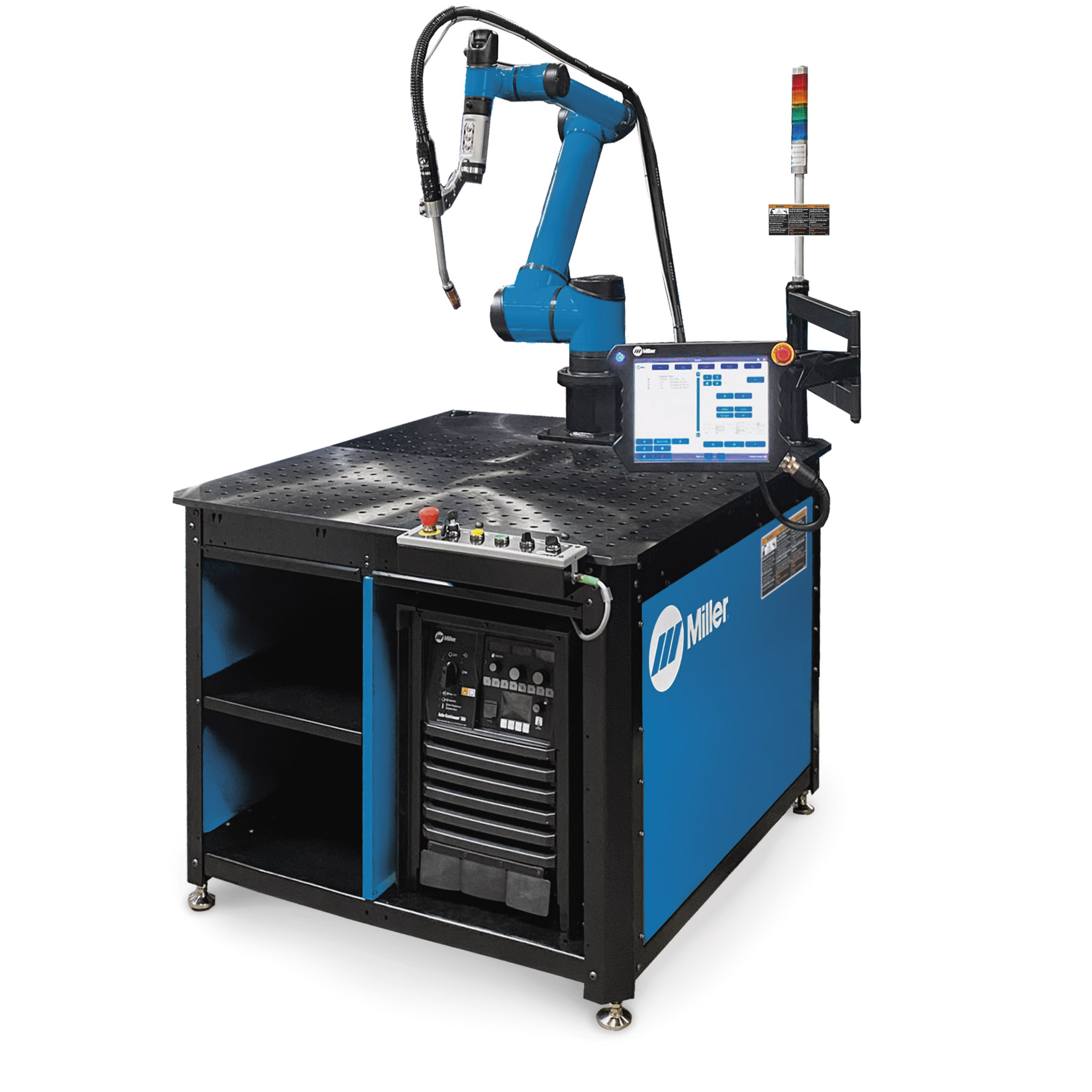Unlocking The Power Of Miller Welding Education: Your Path To Success
Welding is more than just a skill—it’s an art form, a science, and a career path that offers endless opportunities. Among the many institutions and programs dedicated to teaching welding, Miller Welding Education stands out as a beacon of excellence. Known for its cutting-edge curriculum, hands-on training, and industry-recognized certifications, Miller Welding Education has helped countless individuals turn their passion for welding into a thriving career. Whether you're a beginner eager to learn the basics or a seasoned professional looking to refine your skills, this program offers something for everyone.
What sets Miller Welding Education apart is its commitment to providing students with the tools and knowledge they need to succeed in a rapidly evolving industry. From mastering the fundamentals of arc welding to exploring advanced techniques like TIG and MIG welding, the program ensures that every student leaves with a comprehensive understanding of welding principles. The program also emphasizes safety, efficiency, and innovation, preparing students to meet the demands of modern welding projects.
As we delve deeper into the world of Miller Welding Education, we’ll explore its curriculum, the benefits it offers, and how it can help you achieve your career goals. Whether you’re curious about the types of courses available, the career opportunities that await, or the resources provided by the program, this article will answer all your questions and more. Let’s embark on this journey together and uncover how Miller Welding Education can transform your future.
Read also:Who Is Yajana Cano Exploring The Life And Legacy Of A Remarkable Figure
Table of Contents
- What is Miller Welding Education?
- Why Should You Choose Miller Welding Education?
- How Does the Curriculum Work?
- What Are the Career Opportunities After Miller Welding Education?
- Is Miller Welding Education Right for You?
- What Resources Are Available for Students?
- How Can You Enroll in Miller Welding Education?
- Frequently Asked Questions About Miller Welding Education
What is Miller Welding Education?
Miller Welding Education is a renowned program designed to equip individuals with the skills, knowledge, and certifications necessary to excel in the welding industry. Backed by Miller Electric, a global leader in welding technology, this educational initiative combines theoretical learning with hands-on practice to ensure students are job-ready upon completion. The program is structured to cater to individuals at all skill levels, from beginners to experienced welders looking to expand their expertise.
One of the standout features of Miller Welding Education is its focus on modern welding techniques and technologies. Students are introduced to a variety of welding processes, including Shielded Metal Arc Welding (SMAW), Gas Metal Arc Welding (GMAW), and Tungsten Inert Gas Welding (TIG). Each process is taught with an emphasis on precision, safety, and efficiency, ensuring that students can apply their skills in real-world scenarios. Additionally, the program incorporates lessons on reading blueprints, understanding metallurgy, and adhering to industry standards, making it a comprehensive learning experience.
Miller Welding Education also places a strong emphasis on innovation. As the welding industry continues to evolve, staying ahead of technological advancements is crucial. The program ensures that students are familiar with the latest welding equipment and tools, many of which are developed by Miller Electric itself. This gives students a competitive edge in the job market, as they are trained on the same equipment used by professionals worldwide.
What Makes Miller Welding Education Unique?
Several factors set Miller Welding Education apart from other welding programs. First and foremost is its affiliation with Miller Electric, a company known for its cutting-edge welding technology. This partnership allows students to learn on state-of-the-art equipment, giving them hands-on experience with tools they’ll likely encounter in their careers. Additionally, the program’s curriculum is regularly updated to reflect the latest industry trends and standards, ensuring that students are always learning relevant material.
Another unique aspect of Miller Welding Education is its focus on safety. Welding can be a hazardous profession if proper precautions aren’t taken, and the program goes above and beyond to instill safe practices in its students. From wearing the correct personal protective equipment (PPE) to understanding the risks associated with different welding processes, safety is woven into every aspect of the curriculum. This not only protects students during their training but also prepares them to maintain a safe work environment in their future jobs.
How Does Miller Welding Education Compare to Other Programs?
When compared to other welding education programs, Miller Welding Education stands out for its comprehensive approach. While many programs focus solely on teaching welding techniques, Miller goes a step further by incorporating lessons on industry standards, equipment maintenance, and career development. This holistic approach ensures that students are not only skilled welders but also well-rounded professionals ready to tackle the challenges of the industry.
Read also:Who Is Pat Lalama Discover The Inspiring Journey Of A Remarkable Personality
Why Should You Choose Miller Welding Education?
Choosing the right welding education program can be a daunting task, especially with so many options available. However, Miller Welding Education offers several compelling reasons why it should be at the top of your list. For starters, the program is backed by Miller Electric, a name synonymous with quality and innovation in the welding industry. This affiliation ensures that students receive training on the latest equipment and technologies, giving them a significant advantage in the job market.
Another reason to choose Miller Welding Education is its emphasis on hands-on learning. While theoretical knowledge is essential, the ability to apply that knowledge in practical settings is what truly sets skilled welders apart. The program provides students with ample opportunities to practice their skills in a controlled environment, allowing them to build confidence and refine their techniques. This hands-on approach not only enhances learning but also prepares students for the demands of real-world welding projects.
Finally, Miller Welding Education offers a supportive learning environment. From experienced instructors to a robust network of alumni, students are surrounded by individuals who are invested in their success. The program also provides access to a wide range of resources, including online tutorials, workshops, and industry connections, ensuring that students have everything they need to thrive.
What Are the Benefits of Miller Welding Education?
- Access to state-of-the-art equipment and technologies.
- Comprehensive curriculum covering both theory and practice.
- Emphasis on safety and industry standards.
- Opportunities for hands-on learning and real-world application.
- Strong alumni network and industry connections.
How Does Miller Welding Education Support Career Growth?
One of the key benefits of Miller Welding Education is its focus on career development. The program not only teaches welding skills but also provides guidance on resume building, interview preparation, and job placement. This ensures that students are well-prepared to enter the workforce and secure rewarding positions in the welding industry.
How Does the Curriculum Work?
The curriculum of Miller Welding Education is carefully designed to provide a balanced mix of theoretical knowledge and practical skills. The program begins with foundational courses that introduce students to the basics of welding, including safety protocols, equipment usage, and welding terminology. As students progress, they delve into more advanced topics, such as metallurgy, blueprint reading, and specialized welding techniques.
One of the standout features of the curriculum is its modular structure. Each module focuses on a specific aspect of welding, allowing students to build their knowledge incrementally. For example, one module might cover Gas Metal Arc Welding (GMAW), while another focuses on Tungsten Inert Gas Welding (TIG). This modular approach ensures that students can master each skill before moving on to the next, fostering a deeper understanding of the material.
Additionally, the curriculum includes hands-on labs where students can practice their skills under the guidance of experienced instructors. These labs simulate real-world welding scenarios, giving students the opportunity to apply what they’ve learned in a controlled environment. This practical experience is invaluable, as it prepares students to tackle the challenges they’ll face in their future careers.
What Topics Are Covered in the Curriculum?
- Introduction to welding safety and equipment.
- Fundamentals of arc welding and gas welding.
- Advanced techniques like TIG and MIG welding.
- Blueprint reading and project planning.
- Metallurgy and material science.
How Does the Curriculum Adapt to Industry Trends?
The curriculum of Miller Welding Education is regularly updated to reflect the latest trends and advancements in the welding industry. This ensures that students are always learning relevant material and are prepared to meet the demands of modern welding projects. For example, recent updates have included lessons on automation and robotics in welding, reflecting the growing role of technology in the industry.
What Are the Career Opportunities After Miller Welding Education?
Graduates of Miller Welding Education have access to a wide range of career opportunities in the welding industry. From construction and manufacturing to automotive repair and pipeline welding, the skills learned in the program are applicable to a variety of fields. Many graduates go on to work as welders, fabricators, or welding inspectors, while others pursue roles in welding education or equipment sales.
One of the key advantages of completing Miller Welding Education is the program’s strong emphasis on industry certifications. These certifications not only validate a student’s skills but also make them more attractive to potential employers. For example, certifications in SMAW, GMAW, or TIG welding can open doors to higher-paying positions and specialized roles.
Additionally, the program’s focus on career development ensures that students are well-prepared to enter the workforce. From resume-building workshops to job placement assistance, Miller Welding Education provides the resources students need to secure rewarding positions in the welding industry.
What Are the Most In-Demand Welding Jobs?
- Structural welder in construction projects.
- Pipeline welder in the oil and gas industry.
- Automotive welder in manufacturing plants.
- Welding inspector for quality assurance.
- Underwater welder for specialized projects.
How Does Miller Welding Education Prepare You for These Roles?
Miller Welding Education prepares students for in-demand welding jobs by providing a comprehensive curriculum that covers both foundational and advanced skills. The program also emphasizes certifications and hands-on experience, ensuring that graduates are job-ready upon completion.
Is Miller Welding Education Right for You?
Deciding whether Miller Welding Education is the right fit for you depends on your career goals and personal interests. If you’re passionate about welding and eager to learn new skills, the program offers a structured and supportive environment to help you succeed. However, it’s important to consider factors such as time commitment, cost, and the level of dedication required before enrolling.
What Resources Are Available for Students?
Miller Welding Education provides a wealth of resources to support student success. These include online tutorials, workshops, and access to industry experts. Additionally, students have access to a strong alumni network and career placement services.
How Can You Enroll in Miller Welding Education?
Enrolling in Miller Welding Education is a straightforward process. Prospective students can visit the program’s official website to learn more about course offerings, schedules, and enrollment requirements. The program also offers financial aid and scholarship opportunities for eligible students.
Frequently Asked Questions About Miller Welding Education
What is the duration of the program?
The duration of Miller Welding Education varies depending on the course and level of certification. Most programs can be completed within 6 months to 2 years.
Is financial aid available?
Yes, Miller Welding Education offers financial aid and scholarship opportunities for eligible students. Visit their website for more information.
What certifications are offered?
Miller Welding Education offers certifications in various welding processes, including SMAW, GMAW, and TIG welding, among others.
In conclusion, Miller Welding Education is a transformative program that equips individuals with the skills and knowledge needed to succeed in the welding industry. Whether you’re a beginner or an experienced welder
Nicole Miller Designer: Unveiling The Iconic Fashion Legacy
Exploring Nikki Blades' Nationality: A Comprehensive Guide
What Temperature Is Medium Rare? The Ultimate Guide To Perfectly Cooked Meat

Copilot™ Collaborative Welding Robot MillerWelds

Advanced welding solutions and cobots ensure accurate positioning and